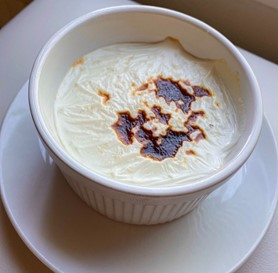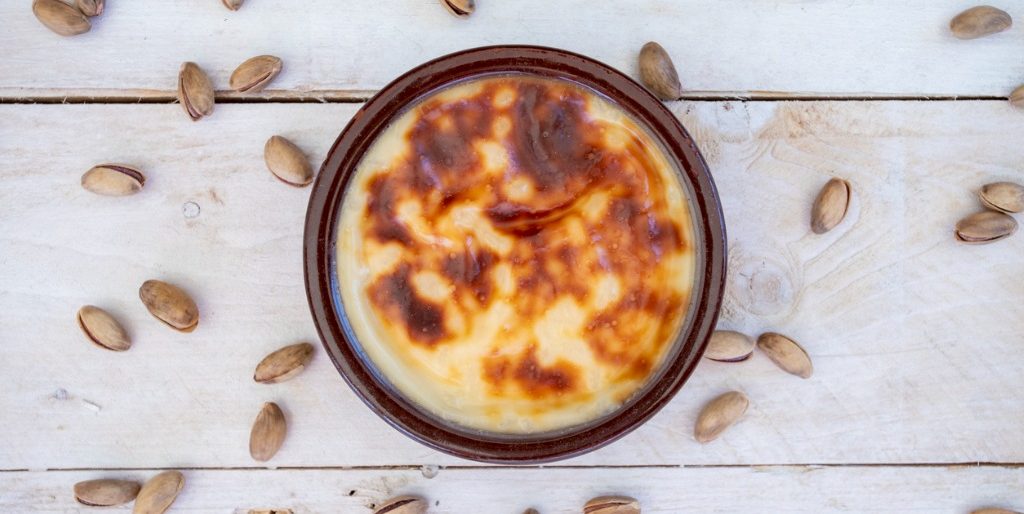This traditional Turkish pudding requires the simplest of ingredients and is the creamiest, most comforting treat to have during your afternoon tea. A few simple tweaks have been made to the original recipe to make this version weight-loss friendly. Although it can be eaten cold, it is usually enjoyed warm where the orange blossom aroma will surely leave you wanting more.
Serves: 3
Dietary: Vegetarian, Gluten-free, nut-free
Contains: Milk
Preparation time: 55 minutes.
Cooking time: 50 minutes
INGREDIENTS
½ cup pudding rice, short-grain
1 cup water
1 ½ cup skimmed milk
20 drops saccharin based liquid sweetener
2 Tbsp orange blossom water
 METHOD
METHOD
- Add the water to a small saucepan and bring to a boil on high heat.
- Add the rice to the saucepan and bring down the heat to low with the lid on.
- Let the rice and water simmer for 15 minutes.
- Add the milk to the saucepan and simmer. While the pudding is simmering, make sure to continuously stir.
- Preheat the oven to 200oC and choose the grill setting (this allows the surface of the pudding to develop a golden-brown colour).
- Continuously stir the pudding on low heat for around 25 minutes.
- Once the pudding has thickened, add the orange blossom water and sweetener, then remove the pudding from the heat.
- Place the pudding into oven proof bowls and bake in the oven for 10 minutes.
- Take out of the oven and serve warm.
This recipe has been donated by Tamara Rammal
NUTRITION INFORMATION
Per serving:
Total calories: 147 kcal
Fat: 0.6 g
Saturated Fat: 0.2 g
Carbohydrate: 29 g
Total sugar: 5.8 g
Fibre: 0.5 g
Protein: 6.1 g
Salt: 0.14 g
NUTRITION FACTS
- Skimmed milk has been used instead of full-fat milk to reduce the fat content.
- In order to reduce the sugar content, the artificial sweetener has been used.
- It offers a good source of protein, Vitamin B12 and iodine.
VARIATIONS
- Plant-based milk can be used in place of cow milk to make this vegan.
- Plant-based milk or lactose-free milk can also be used to make this suitable for those sensitive to lactose.
- Different low-calorie sweeteners such as stevia can be used.
- The sweetener can be omitted as the natural recipe is already subtly sweet.
© 2021 The Caroline Walker Trust

